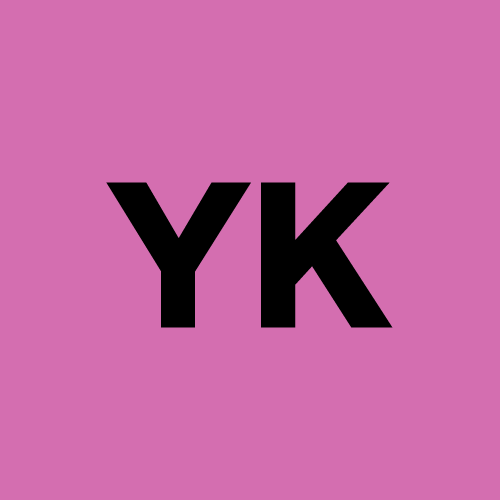Kubernetes and Cloud Security: What You Need to Know
 yamini k
yamini kIn today’s fast-evolving digital landscape, cloud computing has revolutionized how organizations build, deploy, and manage applications. One of the key players in this transformation is Kubernetes, an open-source container orchestration platform that simplifies application deployment and scaling. However, as Kubernetes adoption rises, so does the complexity and risk associated with cloud security.
This blog will explore how Kubernetes fits into the broader cybersecurity picture, the common security vulnerabilities, and best practices to secure your Kubernetes environment.
What is Kubernetes?
Kubernetes, often abbreviated as K8s, is a container orchestration system designed to automate the deployment, scaling, and management of containerized applications. It offers features like self-healing, load balancing, and automated rollouts and rollbacks.
However, its dynamic and distributed nature introduces a variety of security challenges that must be addressed to prevent data breaches, unauthorized access, and misconfigurations.
The Importance of Cloud Security in Kubernetes Environments
As Kubernetes environments run on cloud infrastructure, they inherit all the risks associated with cloud security. These risks are amplified due to the complex architecture of Kubernetes, involving pods, nodes, services, and APIs.
Some of the key concerns include:
Misconfigured access controls
Insecure container images
Lack of network segmentation
Unencrypted communication
Supply chain attacks
These challenges make Kubernetes a high-value target for cyber attackers, necessitating a robust and layered approach to cloud-native security.
Common Kubernetes Security Threats
To effectively secure Kubernetes, it’s crucial to understand the most prevalent threats:
1. API Server Exposure
The Kubernetes API server is the control plane's front end. If exposed to the internet without proper authentication and authorization, attackers can manipulate workloads or extract sensitive data.
2. Privilege Escalation
Misconfigured RBAC (Role-Based Access Control) can allow users or services to gain elevated privileges, leading to full cluster compromise.
3. Container Vulnerabilities
Containers may run outdated software or contain vulnerable dependencies, which can be exploited for remote code execution, data exfiltration, or lateral movement.
4. Pod-to-Pod Attacks
Without proper network policies, malicious pods can move laterally within the cluster, compromising other workloads.
5. Secrets Management Risks
Kubernetes stores sensitive data like passwords, tokens, and keys in Secrets. If these are not encrypted or properly restricted, they can be a goldmine for attackers.
Kubernetes Security Best Practices
To address the above threats, consider implementing the following cybersecurity best practices:
1. Implement Role-Based Access Control (RBAC)
Enforce the principle of least privilege by granting users and services only the permissions they need. Regularly audit RBAC policies to remove unused roles and permissions.
2. Use Network Policies
Restrict communication between pods using Kubernetes Network Policies. Define rules that specify which pods can talk to each other, thereby reducing the attack surface.
3. Scan Container Images
Use tools like Clair, Trivy, or Anchore to scan container images for vulnerabilities before deploying them to your cluster.
4. Secure Kubernetes Secrets
Use external secret management solutions like HashiCorp Vault, AWS Secrets Manager, or Azure Key Vault to store sensitive data. Ensure that Secrets are encrypted at rest and access-controlled.
5. Enable Audit Logging
Kubernetes supports audit logging, which tracks all user and system activity. Regularly review logs to detect suspicious behavior, unauthorized access, or compliance violations.
6. Use Pod Security Standards (PSS)
Apply PodSecurityAdmission policies to enforce constraints on pod specifications. This prevents risky configurations like running containers as root or enabling privileged mode.
7. Encrypt Data in Transit
Ensure that communication between Kubernetes components (e.g., kubelets, API server) is encrypted using TLS (Transport Layer Security). Also, encrypt etcd, Kubernetes' key-value store.
Cloud Provider Security Features
Most cloud service providers (CSPs) offer managed Kubernetes services such as:
Amazon EKS
Google GKE
Azure AKS
These platforms provide built-in security controls, including identity and access management (IAM), automated patching, and DDoS protection. Leverage these native tools to strengthen your Kubernetes security posture.
DevSecOps: Security in the CI/CD Pipeline
Integrate DevSecOps practices to embed security controls directly into your development pipeline. This includes:
Static and dynamic code analysis
Image scanning
Policy as code using tools like OPA (Open Policy Agent)
Continuous monitoring
By shifting security left, you can detect and fix issues earlier in the development cycle, reducing the risk of vulnerabilities making it to production.
Kubernetes Security Tools
Here’s a list of popular tools to bolster your Kubernetes security:
Tool | Purpose |
Kube-bench | CIS Kubernetes Benchmark testing |
Kube-hunter | Penetration testing of Kubernetes setups |
Falco | Runtime security monitoring |
Kubescape | Compliance scanning and risk analysis |
OPA/Gatekeeper | Policy enforcement and governance |
As organizations increasingly rely on Kubernetes to power their cloud-native applications, understanding the intersection of Kubernetes and cloud security becomes vital. Misconfigurations, vulnerable images, and poor access controls can expose clusters to severe cybersecurity risks*.*
By adopting a defense-in-depth strategy*, leveraging cloud-native tools, and integrating **DevSecOps into your CI/CD workflows, you can significantly improve the security posture** of your Kubernetes environment.*
Remember, cybersecurity is not a one-time action—it’s a continuous journey that evolves alongside your infrastructure.
Subscribe to my newsletter
Read articles from yamini k directly inside your inbox. Subscribe to the newsletter, and don't miss out.
Written by
